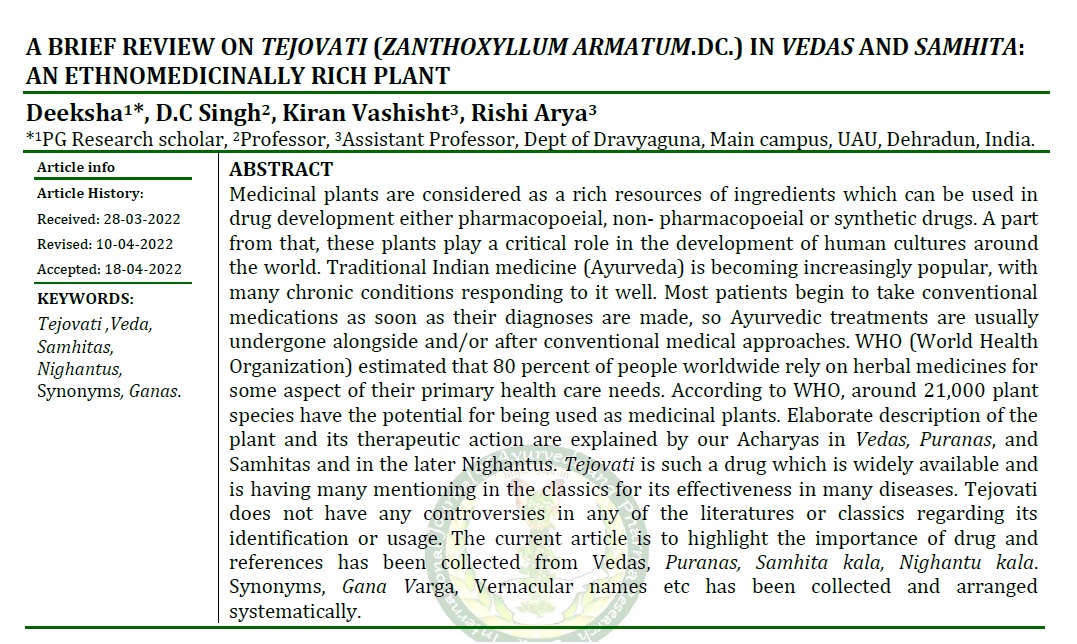A Brief Review on Tejovati (Zanthoxyllum Armatum.Dc.) in Vedas and Samhita: An Ethnomedicinally Rich Plant
Abstract
Medicinal plants are considered as a rich resources of ingredients which can be used in drug development either pharmacopoeial, non- pharmacopoeial or synthetic drugs. A part from that, these plants play a critical role in the development of human cultures around the world. Traditional Indian medicine (Ayurveda) is becoming increasingly popular, with many chronic conditions responding to it well. Most patients begin to take conventional medications as soon as their diagnoses are made, so Ayurvedic treatments are usually undergone alongside and/or after conventional medical approaches. WHO (World Health Organization) estimated that 80 percent of people worldwide rely on herbal medicines for some aspect of their primary health care needs. According to WHO, around 21,000 plant species have the potential for being used as medicinal plants. Elaborate description of the plant and its therapeutic action are explained by our Acharyas in Vedas, Puranas, and Samhitas and in the later Nighantus. Tejovati is such a drug which is widely available and is having many mentioning in the classics for its effectiveness in many diseases. Tejovati does not have any controversies in any of the literatures or classics regarding its identification or usage. The current article is to highlight the importance of drug and references has been collected from Vedas, Puranas, Samhita kala, Nighantu kala. Synonyms, Gana Varga, Vernacular names etc has been collected and arranged systematically.
Downloads

Copyright (c) 2022 International Journal of Ayurveda and Pharma Research

This work is licensed under a Creative Commons Attribution-NonCommercial-ShareAlike 4.0 International License.






